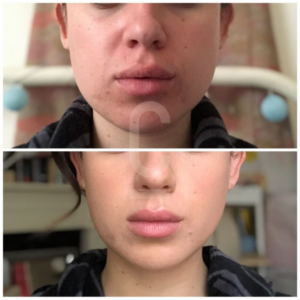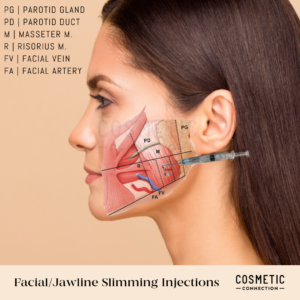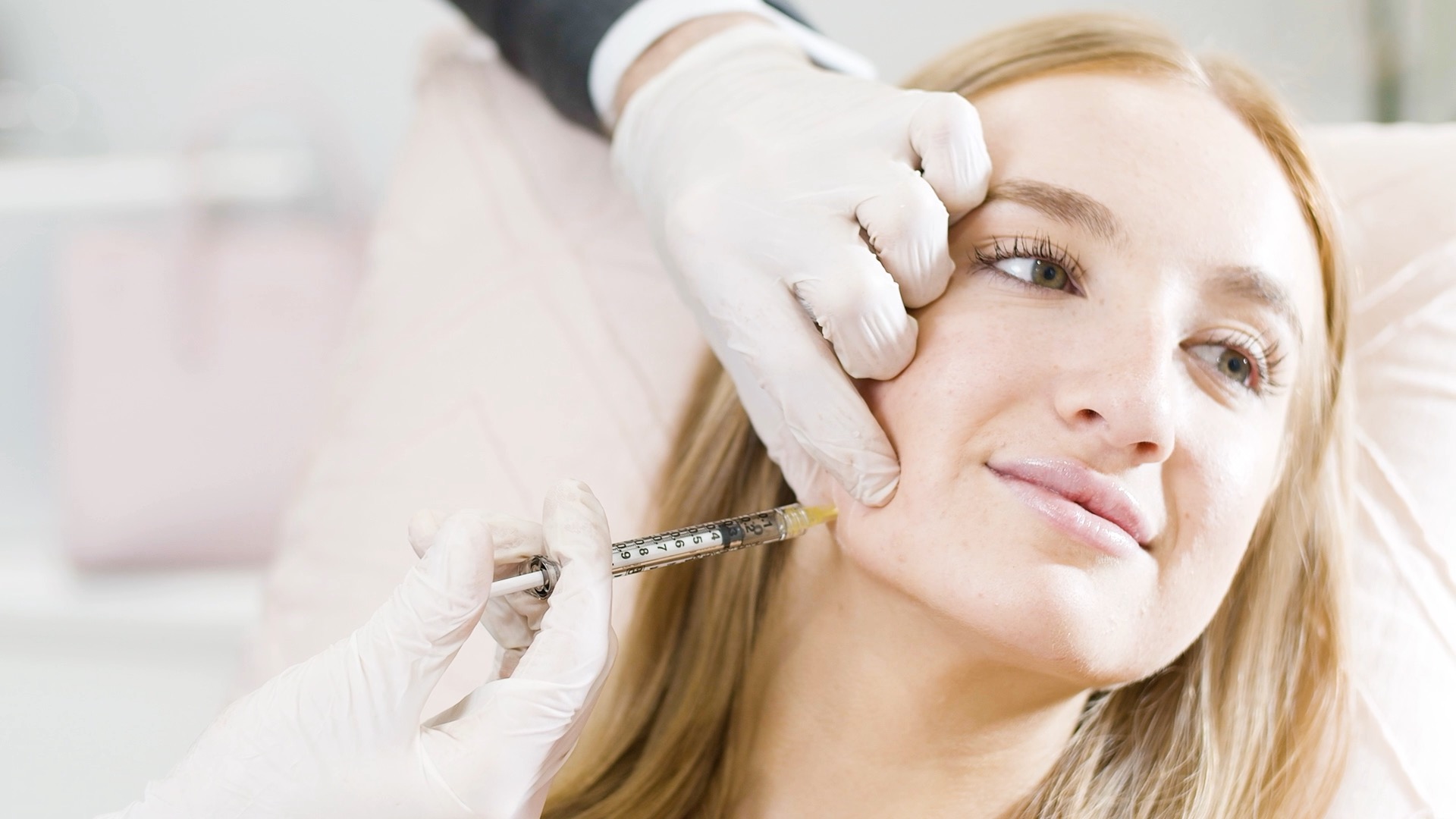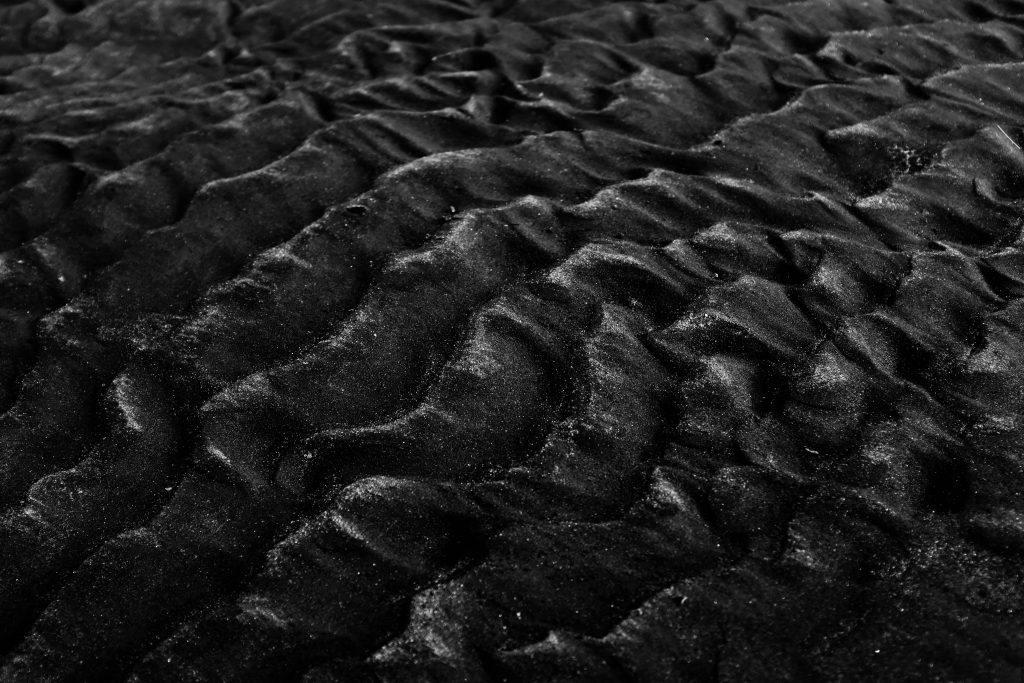Masseter Injections: An Overview of Non-Surgical Jawline Contouring
Masseter injections, also known as jawline slimming injections, are a popular non-surgical treatment to slim the jawline. The paired masseter muscles are found at the back of your jawline and are responsible for chewing food and clenching your jaw. Over time the masseter muscles can become enlarged due to teeth grinding, jaw clenching and chewing tough food. This can cause you to develop a square-shaped jawline, which some people feel makes them appear masculine. Masseter injections can reduce the size of your masseter muscles, and create a slimmer, more streamlines and aesthetically pleasing jawline.
Here, we will outline the benefits, procedure details, side effects and aftercare of masseter injections, and address some of the most common questions about the treatment.
What are the benefits of masseter injections?
- Slimming down the jawline: One of the most popular benefits of masseter injections is to reduce the size of the masseter muscles. This gives the faced a slimmer and more contoured appearance.
- Relieving symptoms of TMJ disorder: Temporamandibular joint (TMJ) disorder is a medical condition that can cause pain, clicking and difficulty in opening and closing your mouth. Masseter injections relax the masseter muscles, which can improve the symptoms of TAMJ disorder.
- Reduce teeth grinding: People who grind their teeth at night and clench their jaw can benefit from masseter injections. By relaxing the masseter muscles, the treatment can prevent teeth grinding and jaw clenching.

Before and after masseter injections to slim this patient’s lower face.
How are masseter injections performed?
- Consultation: Before having masseter injections it is important to have a comprehensive consultation with a qualified practitioner. They will discuss your concerns and expectations, and assess your medical suitability for the treatment.
- Preparation: The practitioner will clean the skin over your masseter muscles, and may apply a numbing gel to reduce discomfort.
- Injection: A fine needle will be used to precisely place botulinum toxin directly into your masseter muscles. This will work to relax your masseters, creating a slimming effect.
- Aftercare: You will need to ensure that your avoid touching or rubbing the injection sites for 4-6 hours to avoid spreading the botulinum toxin.
- Result: The muscle relaxing effect will start to take place after 3-5 days, with the final effect seen 14 days later. It will take up to 6 weeks for the muscle to fully slim down, with results then lasting an average of 6 months. You can repeat the treatment as necessary to maintain your more streamlined, contoured jawline.

Where masseter injections are placed
What are the risks of masseter injections?
- Swelling and bruising: While not common, there is a small chance that you may experience mild swelling and bruising at the injection sites, which usually resolve in a few days.
- Tenderness: Some people find that the injection site is slightly tender. This is normal and will gradually improve on its own.
- Smile weakness: This is a rare side effect of masseter injections and occurs with the injected botulinum toxin affects the nearby risorius muscle. The risorius muscle is involved in smiling, and when weakened will cause a change in your smile. If this occurs, it will resolve on its own.
- Bulging: Muscle bulging is a rare and harmless side effect where a part of the muscle remains unaffected by the masseter injections. When you clench your teeth you will notice a small bulge of the muscle. A simple top-up treatment usually corrects this problem, and it will resolve on its own regardless.
- Asymmetry: While all faces are asymmetrical, if the treatment is not performed carefully, jawline asymmetry may be made more obvious. You can correct this with a touch-up treatment.
Masseter injections aftercare
- Avoid touching or rubbing the injection sites for 4-6 hours.
- Gently apply a wrapped cold pack intermittently to the injection sites.
- Keep the skin clean and make-up free until the following day.
- Avoid alcohol and strenuous exercise for 24 hours.
How to choose a clinic for masseter injections
- Experience: Look for a clinic that has staff who are qualified and experienced in performing masseter injections. You should also ensure that the clinic is doctor-led, because the treatment is a medical procedure that requires a doctor’s oversight.
- Results: Look at the before and after results from the clinic to make sure that they have evidence of their previous treatments.
- Reviews: Read online reviews about the clinic and its staff so that you can see how previous patients have been treated. Check multiple online sources like RealSelf, RateMDs and Google for a better picture of the clinic’s reputation.
- Consultation: Book in for a consultation and meet the practitioner so that you can ask questions and ensure that you are comfortable with them.
- Safety: Check which products will be used for your treatment so that you can ensure that the clinic is following best practice and using high-quality products.
Common questions about masseter injections
Is masseter injection painful?
A: Masseter injections are non-invasive and have very little discomfort. There are ways that your practitioner can minimise pain, including with the use of a tiny needle and numbing gel.
How long do masseter injections take?
A: Masseter injections usually take less than 5 minutes to perform. You appointment will usually be for 20-30 minutes to allow time for a consultation, assessment and aftercare discussion.
When will I see results from masseter injections?
A: You will notice an improvement in teeth grinding and jaw clenching 1-2 weeks after having masseter injections. It can take 4-6 weeks to see the jawline slimming effect.
Are masseter injections safe?
A: Masseter injections are categorised as a low-risk treatment when performed by an appropriately qualified and experienced practitioner. There are some rare risks and side effects which are usually self-limiting, and these will be discussed with you during your consutlation.
Can I resume normal activity after masseter injections?
A: Yes, you are able to resume almost all normal activity immediately after having masseter injections. However, you should ensure that you carefully follow the massetter injection aftercare to minimise the chance of side effects.
How much do masseter injections cost?
A: The cost of masseter injections depends on the extent of treatment and how much botulinum toxin is required. This depends on the size and strength of your masseter muscles, and how much of a difference you would like to see.
Are masster injections the same as jawline contouring injections?
A: No, masseter injections are also known as facial slimming injections. Jawline contouring injections. (also known as jawline sculpting) are a treatment that uses jawline filler to enhance and contour the shape and definition of your jawline.
Facts about masseter injections
- Masseter injections: Masseter injections are a popular non-surgical treatment that can effectively slim down and contour the jawline. The procedure uses botulinum toxin injections to relax your masseter muscles, which are responsible for chewing and clenching your jaw.
- Jawline slimming injections: One of the most popular benefits of masseter injections is that they can slim down your jawline, giving you a more defined and streamlined appearance.
- Non-surgical jawline contouring: Masseter injections are a non-surgical alternative to reshape and contour your jawline. They are non-invasive and don’t require any downtime.
- Botulinum toxin jawline injections: Masseter injections use botulinum toxin to relax the masseter muscle and reduce the size of your jawline. Botulinum toxin is a safe and effective treatment that has been used for decades to reduce fine lines and wrinkles.
- Correct facial symmetry: Masseter injections can improve facial symmetry by balancing the size of your jaw muscles. This can give your face a more balances and symmetrical appearance.
- Non-surgical facial contouring: Masseter injections are a non-surgical treatment that can be combined with cheekbone fillers and jawline filler to contour your face. It is an alternative to traditional facial contouring procedures, such as jawline shaving surgery.
Other benefits of masseter injections
- Masseter muscle reduction: Masseter injections can reduce the size of the masseter muscles, giving your face a slimmer and more feminine appearance.
- Improve jawline definition: Masseter injections can be combined with jawline dermal fillers to enhance your jawline definition and create a more angular and sculpted appearance.
- Jaw reduction: Masseter injections can be used to reduce the size of your jawline, making it less prominent and more proportionate.
- Non-invasive jawline enhancement: Masseter injections are a non-invasive treatment option that can enhance your jawline without the risk and recovery associated with jawline enhancement surgery.
- Get a slimmer face: Masseter injections can create a slimmer and more youthful-looking face by reducing the size of your jaw muscles.
- Using Botox for jawline: Masseter injections are a treatment that use botox injections to relax and slim the jawline muscles.
- Achieve a soft jawline: Masseter injections can soften the appearance of a square and angular-shaped jawline. This gives your face a softer, more feminine appearance.
- Create a slimmer jaw: Masseter injections are an effective treatment to slim down a wide or bulky jawline, giving your face a more proportional appearance.
Summary of masseter injections
If you want to enhance your appearance or treat teeth grinding, then consider trying masseter injections. Masseter injections are non-invasive and are popular due to their simplicity, safety and convenience.
Masseter injections are a non-surgical alternative for facial contouring. They can be combined with other cosmetic injectable treatments for a more natural facial enhancement.


